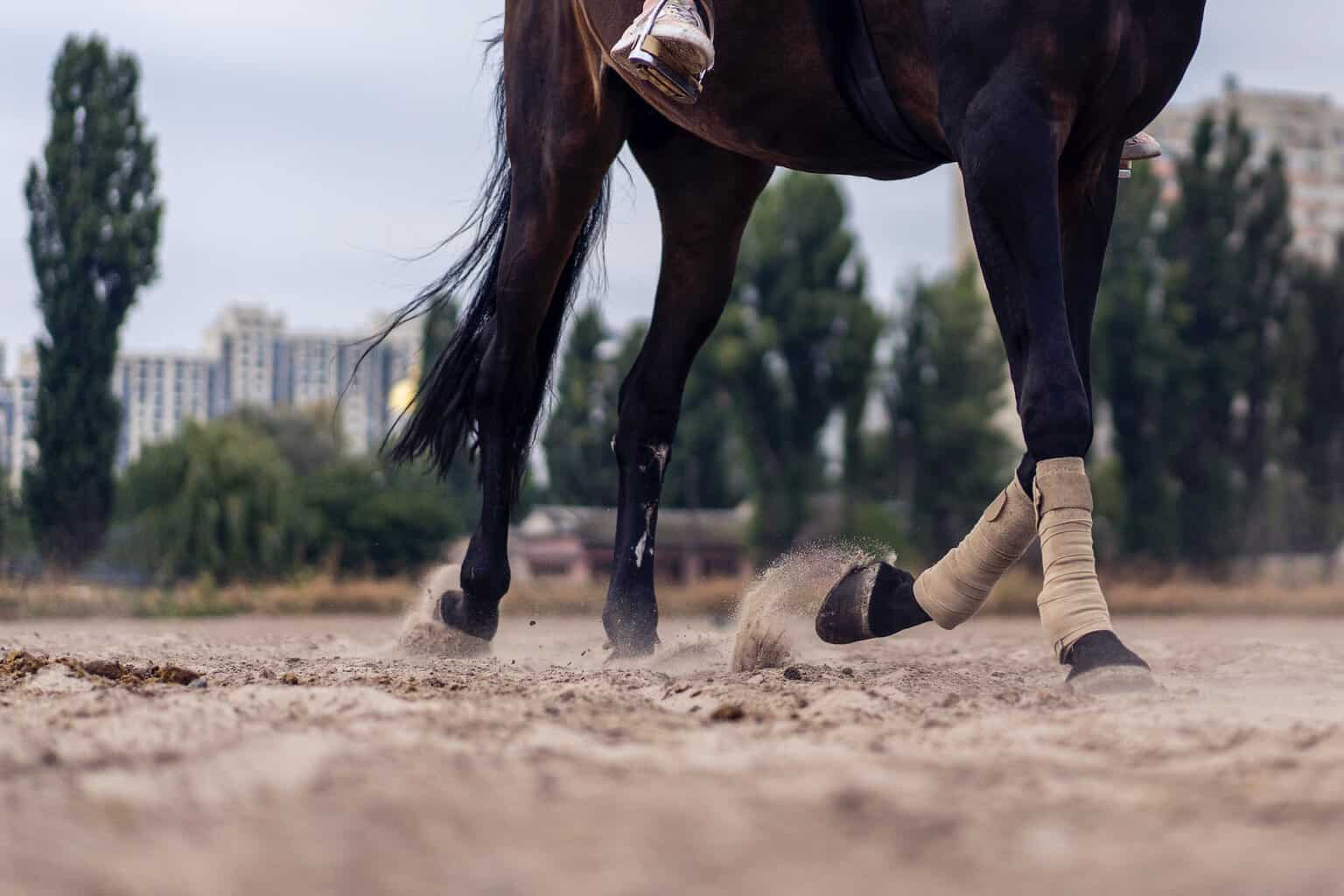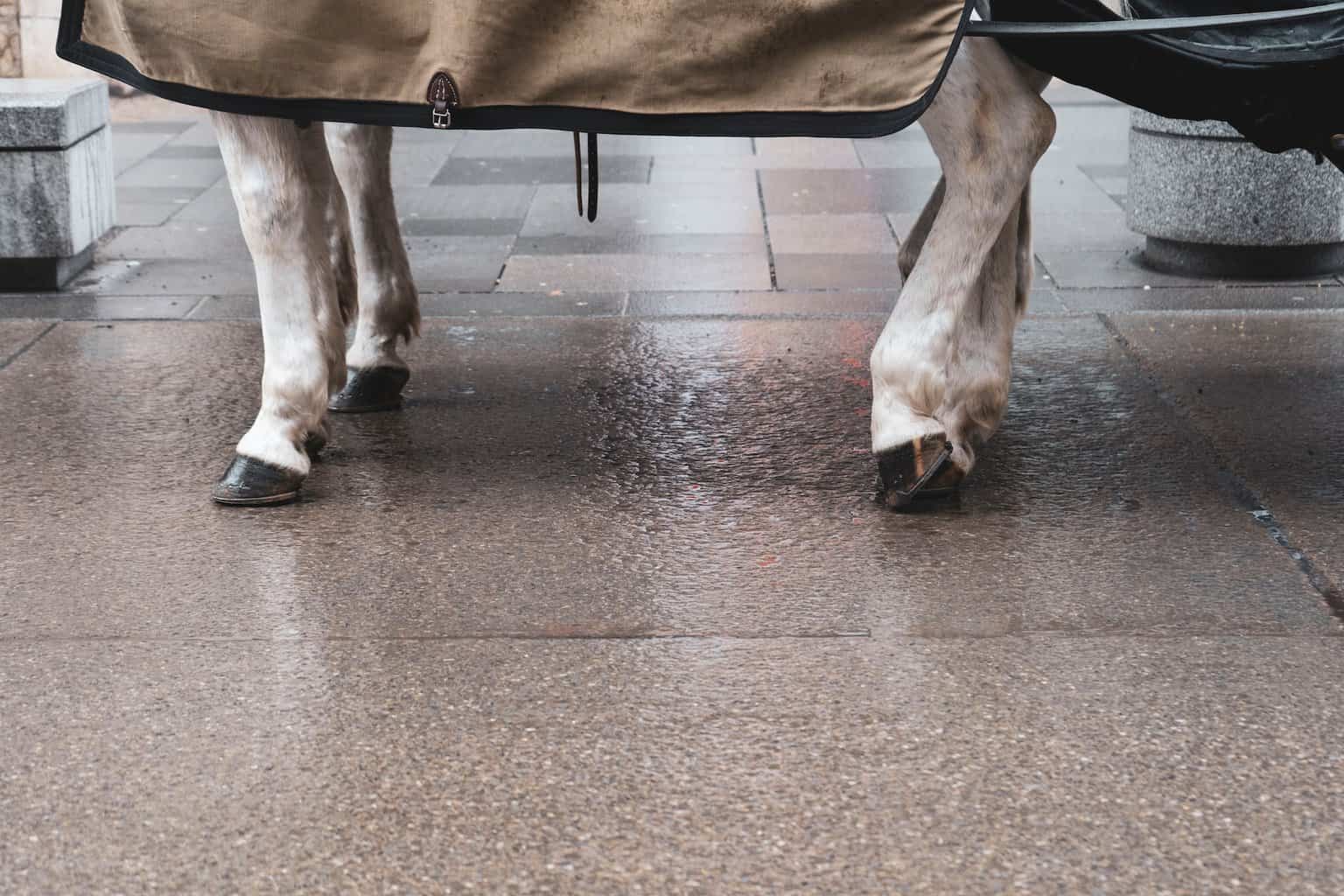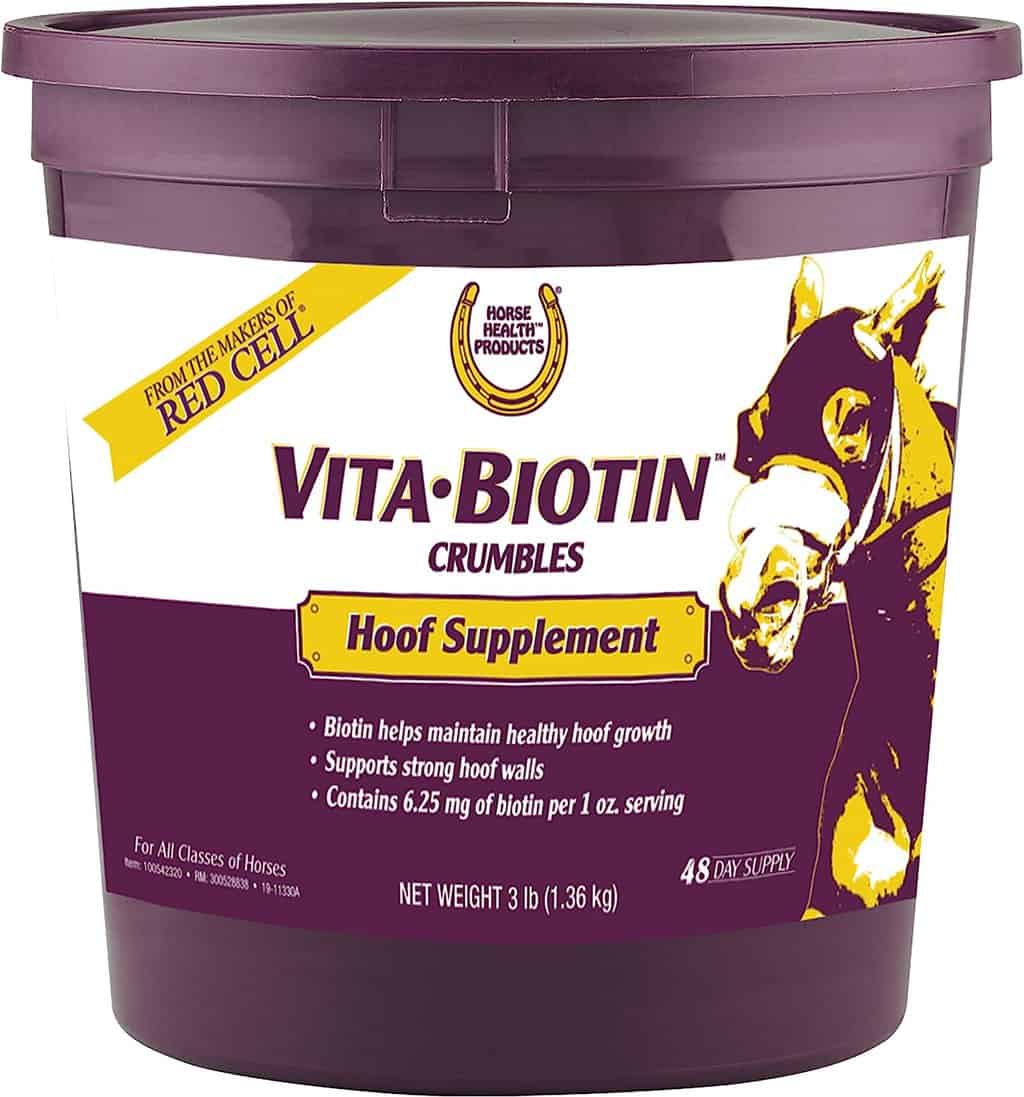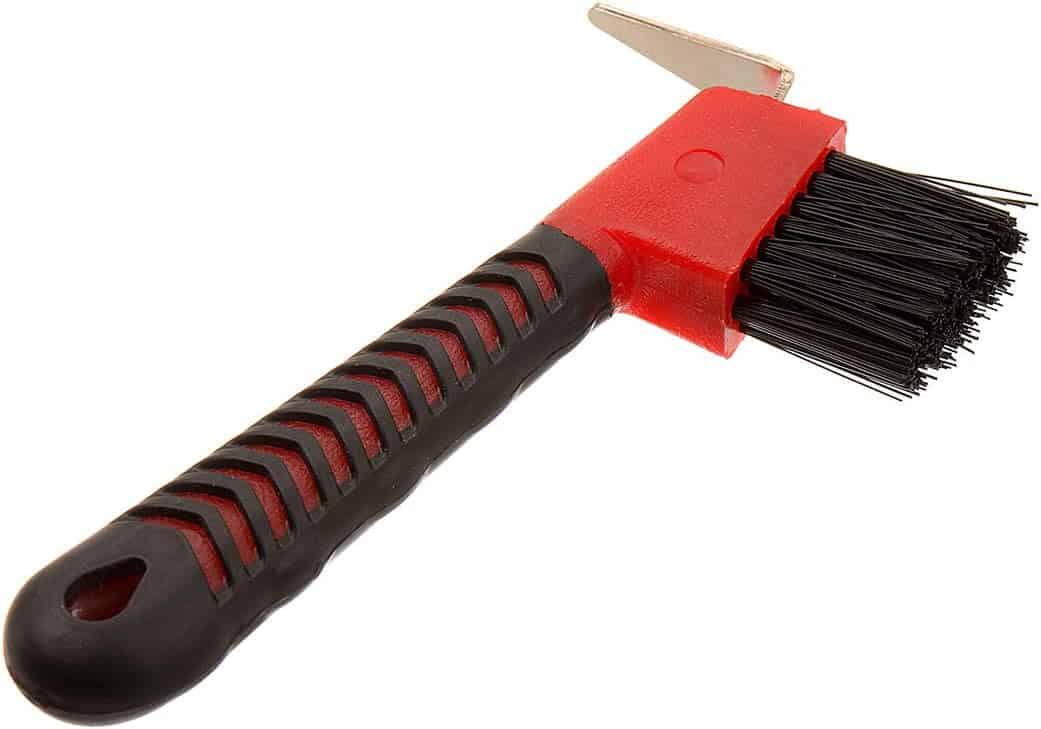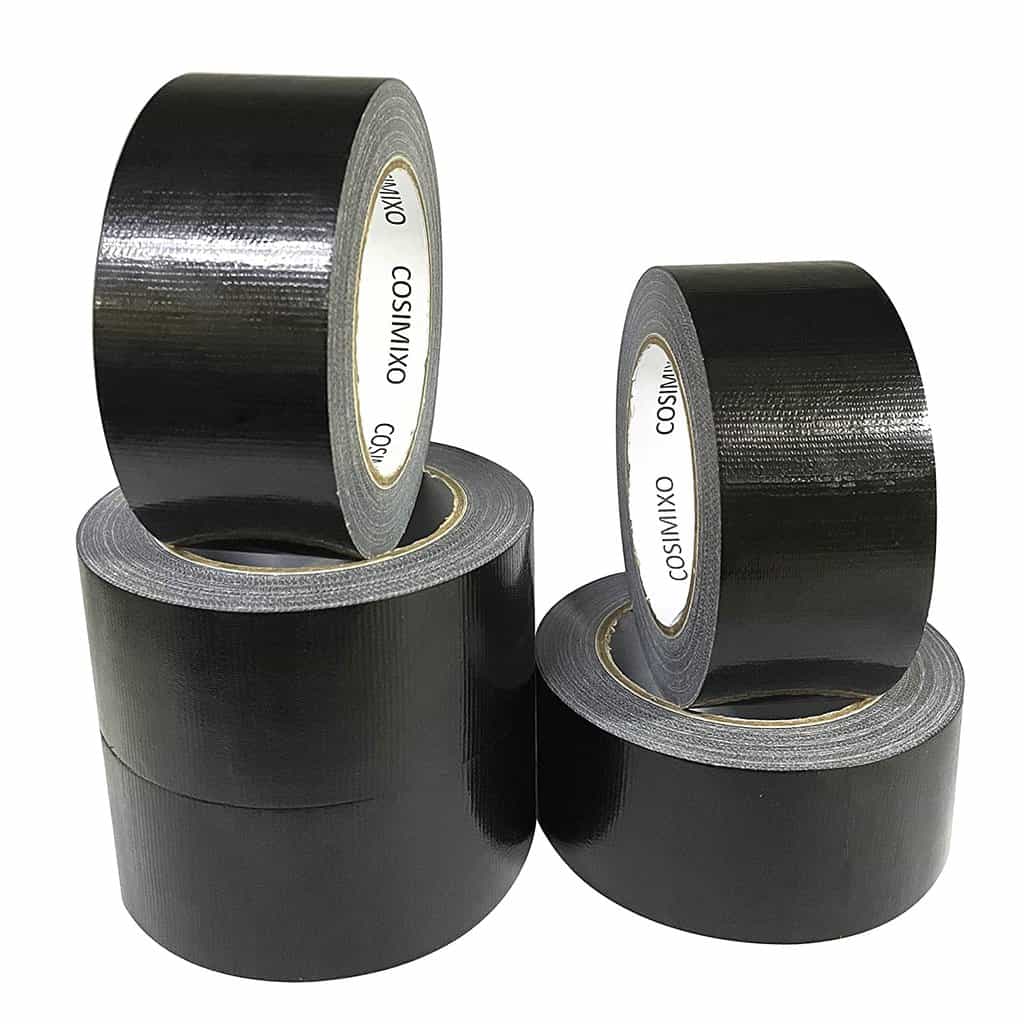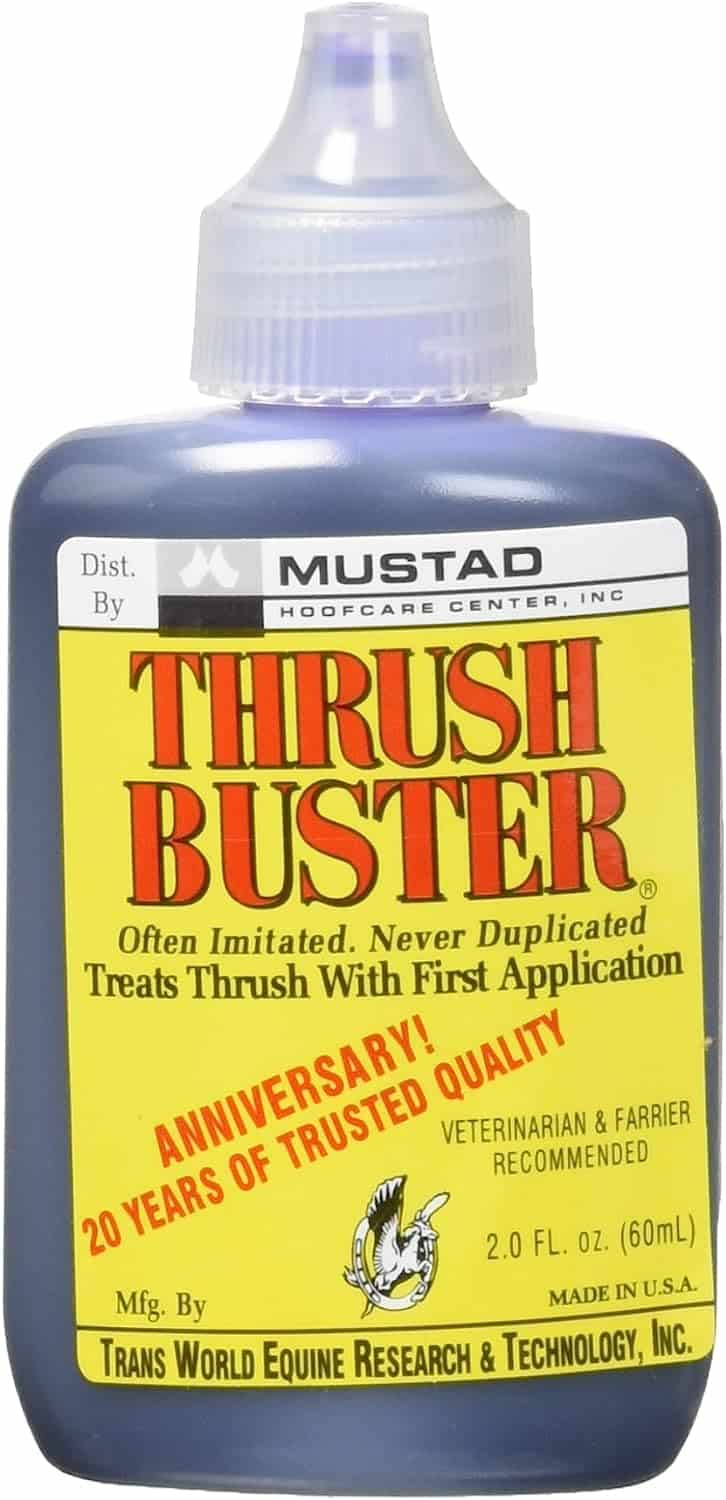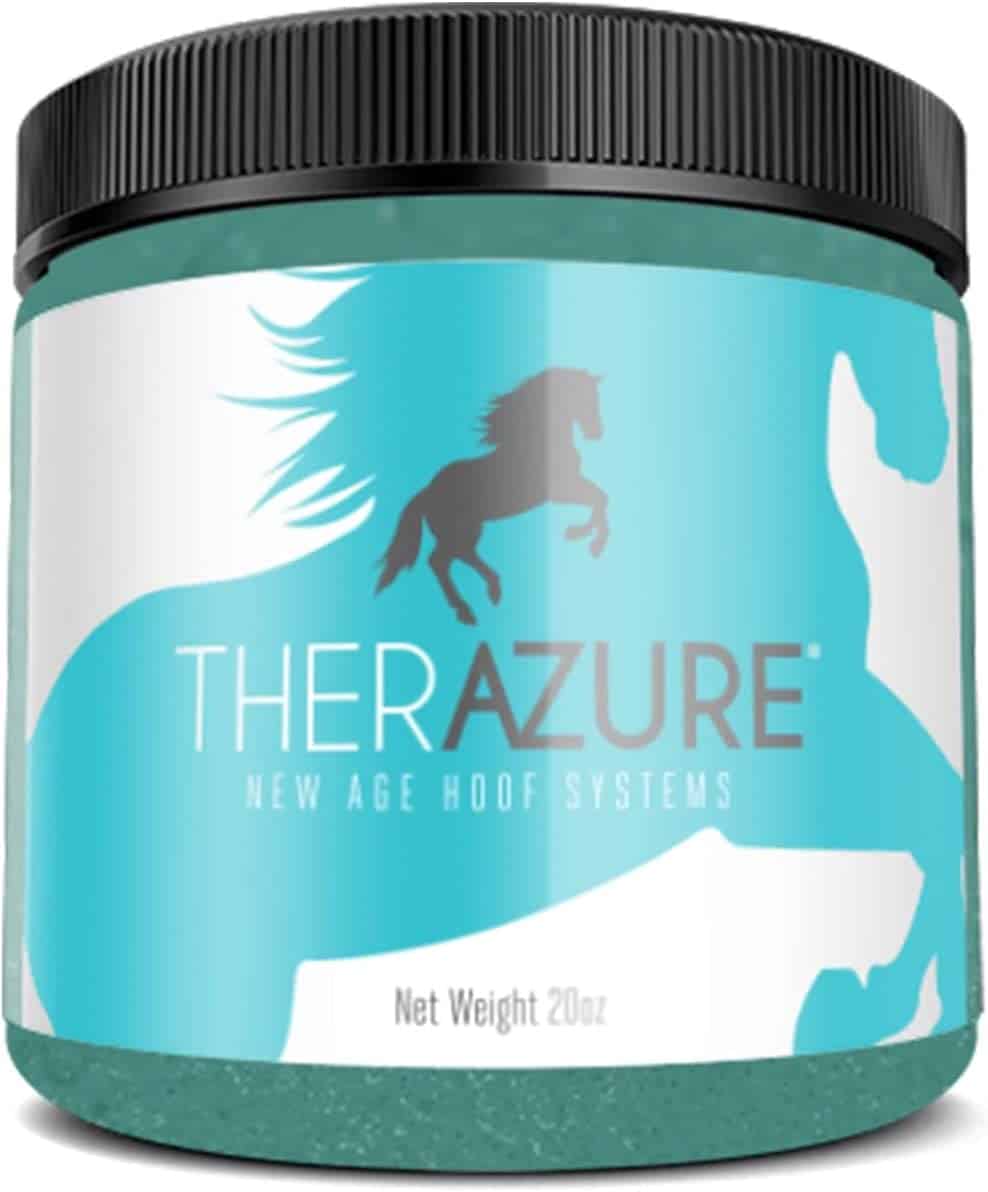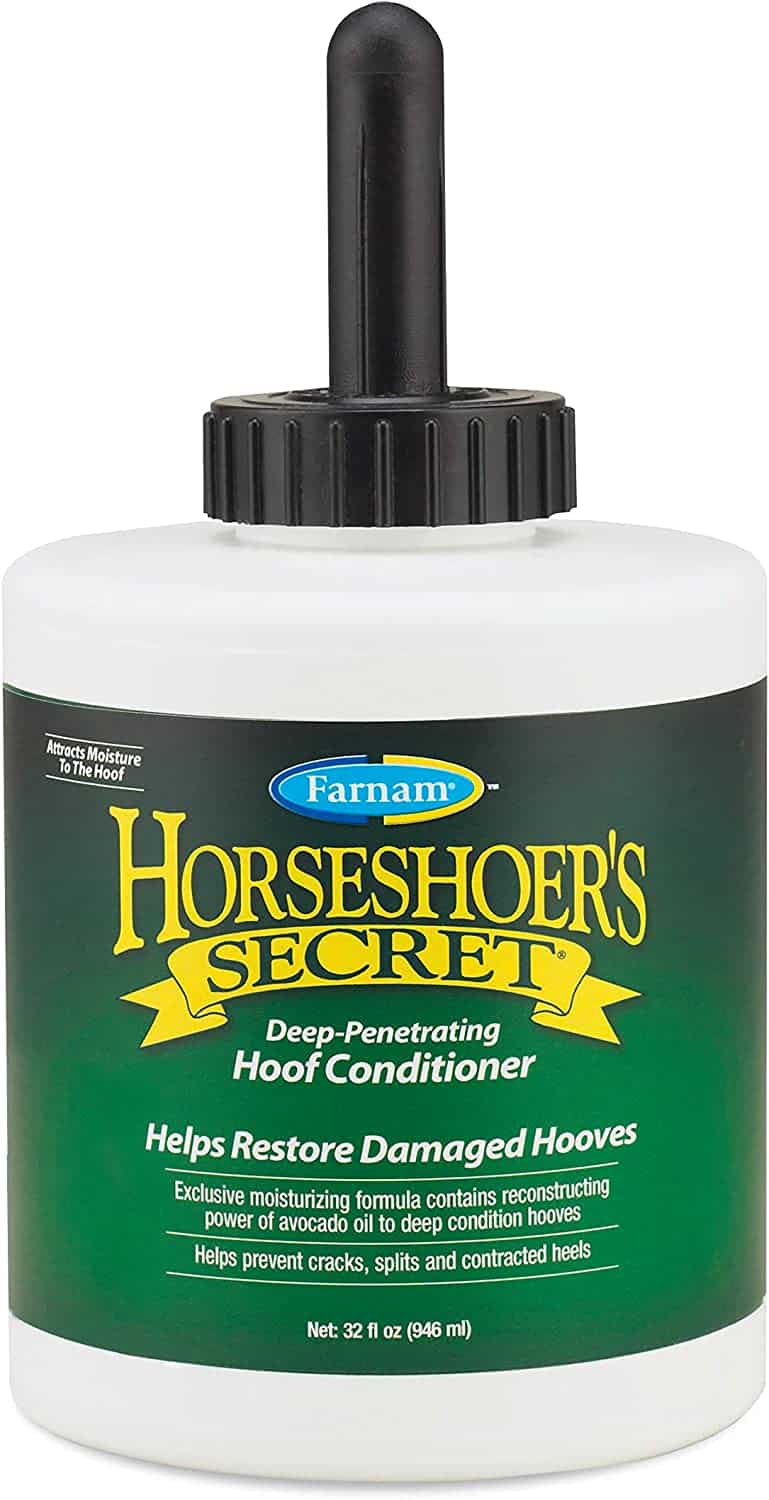- Can Horses Eat Watermelons - September 23, 2023
- How to Get a Horse to Trust You - September 21, 2023
- Best Horse Wormers for Spring Guide - August 10, 2023
Taking care of hooves is a crucial part of horse ownership, and as a former racehorse stud assistant, I deeply understand the importance of healthy hooves. Hooves are everything to a racehorse and any other equine for that matter.
Unhealthy hooves can result in lameness and injury, and it’s better to catch problems early before they develop into severe issues. To discover exactly how to maintain hooves for optimum health, look at my hoof care and common ailments guide below.
Bottom Line Up Front
In this guide, we’ll explore the many aspects which contribute to good hoof health and learn about:
- Basic hoof anatomy
- How to care for a horse’s feet
- Common hoof ailments and how to treat them
The Importance of Hoof Care
Hoof care is a crucial aspect of horsemanship, and as the old saying goes, no hoof, no horse. Hooves are under tremendous pressure as the entire weight of the horse is concentrated in a relatively small area, and when problems occur, the results can be catastrophic.
It’s crucial to catch hoof problems in the early stages, and the best way to do this is by regularly cleaning and inspecting horses’ feet. I incorporate hoof care into my daily barn chores. Hooves also reflect a horse’s health – and a horse with poor feet may be malnourished or have an underlying health problem.
To provide the best care, you should familiarize yourself with hoof anatomy, which we’ll explore in the next section.
Hoof Anatomy
A horse’s hoof divides into two sections, the inner and outer. The outer contains the coronary band, wall, sole, frog, bulb, bars, heel bulbs, and white line. The inner hoof is home to the sensitive sole, digital cushion, collateral cartridges, pedal bone, and navicular.
We’ll take a closer look at the different parts below:
The Outer Hoof
The outer hoof is hard, protects the internal anatomy and provides a horse with stability, balance, and traction, and contains the following:
- The Coronary Band – Is a distinctive white line at the top of the hoof wall, where the hoof meets the leg.
- The Hoof Wall – This is the hard, protective outer layer. It’s made mostly from keratin and grows downwards from the coronary band to the toe.
- The Sole – Is the underside of the hoof. It’s concave and doesn’t bear direct weight.
- The Frog – This is a soft triangle-shaped structure that sits in the sole. It has deep channels along the side called collateral grooves.
- The Bars – Sit on either side of the collateral grooves and are the weight-bearing part of the sole.
- The Heel Bulbs – Sit at the back of the frog and are made from the same soft tissue.
- The White Line – Is on the underside of the foot, where the hoof wall joins the sole.
The Inner Hoof
The inner hoof provides support and stability, helps with circulation and contains the following:
- The Sensitive Sole – Sits above the outer sole and below the pedal bone.
- The Digital Cushion – This is a soft, springy, cartilaginous material, sitting between the pedal bone and digital flexor.
- The Collateral Cartilages – Protect the coffin joint and aid flexibility.
- The Laminae – These are complex structures which connect the hoof wall to the pedal bone.
- The Pedal Bone – This is a small but powerful arch-shaped bone which distributes the horse’s weight around the hoof.
- The Navicular – The navicular is also known as the distal sesamoid. It sits at the back of the pedal bone and is held in place by two ligaments.
A Comprehensive Guide to Hoof Care
I incorporate foot care into my daily barn routine to keep horses’ hooves in optimum condition. I pick out the feet at least once daily and organize regular hoof trims. Horses also have healthier hooves if they eat a balanced diet, live in a clean, dry environment, and receive regular exercise.
We’ll take a deeper look at the different aspects of hoof care below:
Give Horses Regular Hoof Trims
You must hire a good farrier for trimming and never attempt to do them yourself. Poor shoeing and trimming are bad for horses – they can cause injuries and hoof imbalances. Farriers study for many years to learn the trade.
Horses need a hoof trim approximately every 6-8 weeks in summer and 6-12 weeks in winter. Each horse is different – depending on their health and exercise level, some horses will need more or fewer trims. I find that horses without shoes who regularly exercise on hard ground wear their hooves down and often require fewer trims. Whereas show or event horses with shoes need regular farrier visits.
I always choose a farrier through word of mouth or veterinary recommendation. I ensure they are qualified, work patiently with horses, and that they do an excellent job on their feet.
Provide Balanced Nutrition
Nutrition plays a vital part in hoof health, and I always feed horses a forage-rich, balanced diet to maintain their feet. If horses have large amounts of rich food, they are at risk of laminitis, a severe foot condition, while a poor diet will cause brittle, unhealthy hooves.
Nutrition is individual to each horse, and you must feed them depending on their age, exercise level, body condition, and pasture quality. A young, active horse needs more food than a middle-aged, inactive, overweight one.
The ideal diet for horses should be 50-100 percent forage such as grass, hay, and haylage – and they should eat around 1.5-3 percent of their body weight in forage daily. Grass and forage contain biotin, a vitamin vital for hoof health. If a horse isn’t getting enough forage, you must supplement their diet with biotin to keep their hooves healthy.
If I’m ever unsure about what to feed a horse, I ask my vet or an equine nutritionist for advice.
Practice Daily Hoof Care
I aim to pick a horse’s feet out at least daily. I usually do them before I turn them out and again when they come in. Horses gather lots of mud and debris in the hoof during turnout, and I hate leaving this in overnight. I also clean feet before and after riding or exercising to remove stones. Picking out the feet before riding is essential because riding a horse with a stone lodged in its hoof can cause severe injury.
Picking the feet also out allows me to check the condition and for telltale signs of illness, such as bad smells, puncture wounds, or heat.
I always tie a horse up to pick their hooves – to stop them wandering off and for my safety. Using a hoof pick, I clean from the heel towards the frog and use a small brush to clean the surface to get a clear idea about the condition of the sole.
Most hoof picks have a small stiff brush attached, but you can use any small, stiff brush if your hoof pick doesn’t have one. If a horse has shoes, I check that they are securely in place, that the clinches are flat against the hoof, and that the shoe is firmly attached. If I discover a problem with a shoe, I call the farrier immediately for advice.
Give Your Horse Regular Exercise
Regular exercise is essential for hoof health because the hoof acts like a heart – each step helps to pump blood around the body. In the wild, horses roam for miles daily, and movement encourages circulation in the feet and legs.
Ideally, horses need 6 – 12 hours of turnout each day, and the more time they can spend outside, walking around, the better. If a horse is in a stable for long periods, I give them regular exercise to keep their hooves healthy, prevent their legs from swelling, and break boredom.
If I can’t ride a horse to exercise them, I’ll lunge them on a line, let them loose in the schooling ring, or walk them around on a lead rope.
Ensure Horses Live in a Clean Environment
If you don’t clean a stable out regularly, it becomes a breeding ground for bacteria and can cause significant problems with a horse’s feet. If horses stand for long periods in damp, dirty areas or mud, they are more likely to develop fungal infections, such as thrush.
I muck stables out daily and ensure horses have plenty of fresh bedding to keep their hooves clean and dry. When the paddocks are muddy in the winter, I always ensure horses can access a firm, dry standing area so they aren’t standing constantly in mud.
Common Hoof Ailments and How to Treat Them
Hoof problems occur for many reasons. They can be diet related, due to an injury, or some horses are born with bad hooves.
The most common hoof ailments I encounter in horses are navicular disease, abscesses, laminitis, thrush, and hoof cracks, which we’ll look at more closely below.
Ailment #1 – Navicular Syndrome
Navicular syndrome is a chronic degenerative condition affecting the navicular bone and surrounding soft tissue hoof structures. It is a bilateral condition, generally only occurs in the front feet and is more common in working horses rather than ponies and donkeys.
The causes of navicular syndrome can be genetic factors, poor conformation or too much hard groundwork. It usually occurs in older horses over 8-years old – the first signs are intermittent lameness. Horses with navicular syndrome usually have heel pain and tend to step on their toes first when they walk.
A vet uses a physical exam and may suggest radiographs for an accurate navicular diagnosis.
Treatment
Navicular syndrome is a chronic condition, and there is no cure – instead, owners must manage the symptoms with veterinary supervision. Most vets recommend remedial shoeing to relieve symptoms and decrease pressure on the navicular.
I’ve also seen vets prescribe non-steroid anti-inflammatory or corticosteroid injections in the coffin joint for navicular, depending on how bad the condition is.
Ailment #2 – Laminitis
Laminitis is a painful, inflammatory condition affecting the laminae, which connects the pedal bone to the hoof wall. The cause is usually a rich diet, but abnormal weight bearing, inflammatory conditions, such as sepsis, or endocrine diseases like Cushing’s syndrome can also trigger it.
In my experience, laminitis is more common in ponies than horses. The symptoms range from mild to severe and usually affect at least two limbs. In extreme cases, the pedal bone can rotate or even penetrate the sole, and unfortunately, this results in euthanasia.
Horses with laminitis usually walk on their heels and have hot feet and changes on the hoof wall, such as growth rings.
A vet diagnoses laminitis through clinical signs and may sometimes recommend radiographs if they suspect the pedal bone has moved or the animal doesn’t respond to treatment. Laminitis can be incredibly painful, and if you don’t treat it early, it can cause catastrophic hoof damage.
Treatment
If I suspect a horse has laminitis, I consider it an emergency and call the vet immediately. A vet usually recommends box rest, pain medication, and foot support such as thick bedding. They will also advise a restricted diet of limited or low-quality forage – and no sugary, high-carb treats or concentrated food.
There is no cure for laminitis, and often, it will recur. In my experience, it can take weeks or months for symptoms to subside, depending on how bad the case is.
Ailment #3 – Abscess
Foot abscesses are incredibly common in horses and occur when foreign material, such as dirt, penetrates the hoof causing infection and swelling behind the wall. If you’ve seen a horse with an abscess, then you know that it can be incredibly painful due to the pressure on the hoof wall.
For me, a telltale sign of an abscess is sudden lameness in one limb – the hoof will usually be hot, potentially sensitive to touch, and may smell bad. Sometimes you can see an obvious entry hole, but, I find that often, it’s filled with dirt and hard to identify.
Treatment
If I suspect an abscess and the horse can bear weight on the hoof, I initially treat it myself. Abscesses are reasonably easy to cure, but if you are inexperienced and don’t know what’s causing lameness – you must seek veterinary advice.
To treat an abscess, first, I clean the hoof thoroughly with a hoof pick and brush and soak it in warm, salty water for a few minutes. Next, I dry the foot and apply a warm, wet poultice dressing, secured with bandages, to draw out the infection. You can buy poultice dressings from most equestrian suppliers.
Ideally, I will box rest a horse with an abscess to keep the dressing clean and dry. But, if a horse lives outside, I will cover the poultice dressing in heavy-duty duct tape to protect it from mud and water. Always be careful with dressings – don’t make them too tight because they can cut off the circulation to the hoof.
I change the dressing daily to see if the abscess is draining. You will know it drains if there is gunk on the poultice, accompanied by a foul smell. It usually takes around three days for an abscess to drain. If it isn’t draining and the horse is still in pain after 3 or 4 days, I will call the vet to investigate it further.
Ailment #4 – Thrush
Thrush is easy to identify because it smells incredibly foul and often comes with black gunk seeping from the hoof cleft. Thrush affects the frog and comes from anaerobic bacteria and fungi, which invade the soft tissue. It can affect one or more feet and cause lameness.
Horses develop thrush if they stand in damp, dirty places, such as a wet stable or muddy field, for long periods. Fungi and bacteria thrive in dark, moist conditions. Thrush is generally easy to treat if you catch it early, but if left untreated, it can penetrate the soft internal hoof structures causing chronic lameness.
Treatment
In my experience, prevention is better than cure with thrush – and I find the best way to keep it at bay is by keeping a horse’s living area clean and dry. I ensure they get plenty of exercise and don’t let them stand in muddy fields for long periods.
If I suspect thrush, I usually treat it without calling the vet. First, I clean the hooves thoroughly, using a brush and water to remove all the gunk. I wash the foot gently because thrush can make the frog sensitive.
If the thrush is superficial, I use a commercial thrush solution to rinse the foot daily, per the manufacturer’s guidelines. If the thrush is deep, I use a thrush paste to penetrate deeper into the tissue.
If you can’t confidently identify thrush or your horse has a severe case – always consult your veterinarian.
Ailment #5 – Hoof Cracks
There are several types of hoof cracks, and they derive from many factors, including poor conformation, nutrition or living conditions. Frequent environmental changes from wet to dry makes hooves brittle – and can also cause cracks.
Hoof cracks are deep or superficial, and I find the best way to prevent them is with regular oiling, especially in the summer. Daily hoof picks, regular hoof trims, a good diet and regular exercise also help to prevent cracks.
Here’s a list of the most common types of hoof cracks:
- Horizontal Cracks – Are also known as a blowout and are usually due to a coronary band injury or an abscess bursting through the hoof wall. Horizontal cracks are superficial and don’t usually cause lameness.
- Heel Cracks – Occur due to poorly fitting shoes that don’t support the heel, so they crack under pressure.
- Quarter Cracks – Affect the side of the hoof, can be deep and painful and often become infected. They usually happen due to poor conformation, unbalanced feet or neglect.
- Sand Cracks – Run from the coronary band to the toe and are often the result of a coronary injury such as a burst abscess.
- Grass Cracks – Run from the toe to the coronary, are usually superficial and don’t cause lameness. They occur due to long toes, frequent changes in ground conditions – from wet to dry, poor nutrition or lack of exercise.
Treatment
I immediately ask my vet or farrier for advice if I discover a crack, especially if the horse is lame. They will diagnose the issue and offer treatment advice.
The treatment plan depends on the type and severity of the crack. Superficial cracks are usually no cause for concern and grow out over time, while deep cracks may require suturing, gluing, remedial shoeing and even radiographs.
It takes 9-12 months for cracks to grow out of a hoof.
FAQs
Answer: Unhealthy horse hooves are dry and brittle and may have cracks, flaking or an uneven texture on the wall. Signs of an unhealthy frog include moistness and black gunky secretions with a foul smell.
Answer: I usually oil a horse’s hooves 3-4 times a week in the summer and once a week in the winter. Horses benefit more from oil in the hot months, when the land and hooves are dry.
You must apply oil to clean, dry hooves. I like to pick the feet out first and use a stiff brush to remove dirt. You can apply oil to the entire hoof, including the heel, frog and sole, but only oil them once a week because they might get too soft.
Answer: Wild horses roam for miles each day across different terrain, which helps wear down their hooves and keep them short and strong. Domestic horses are often confined to a stable or soft grass paddock so their hooves don’t wear down, and they require regular hoof trims to keep their feet in good shape.
Hoof Care and Common Ailments Guide: Summary
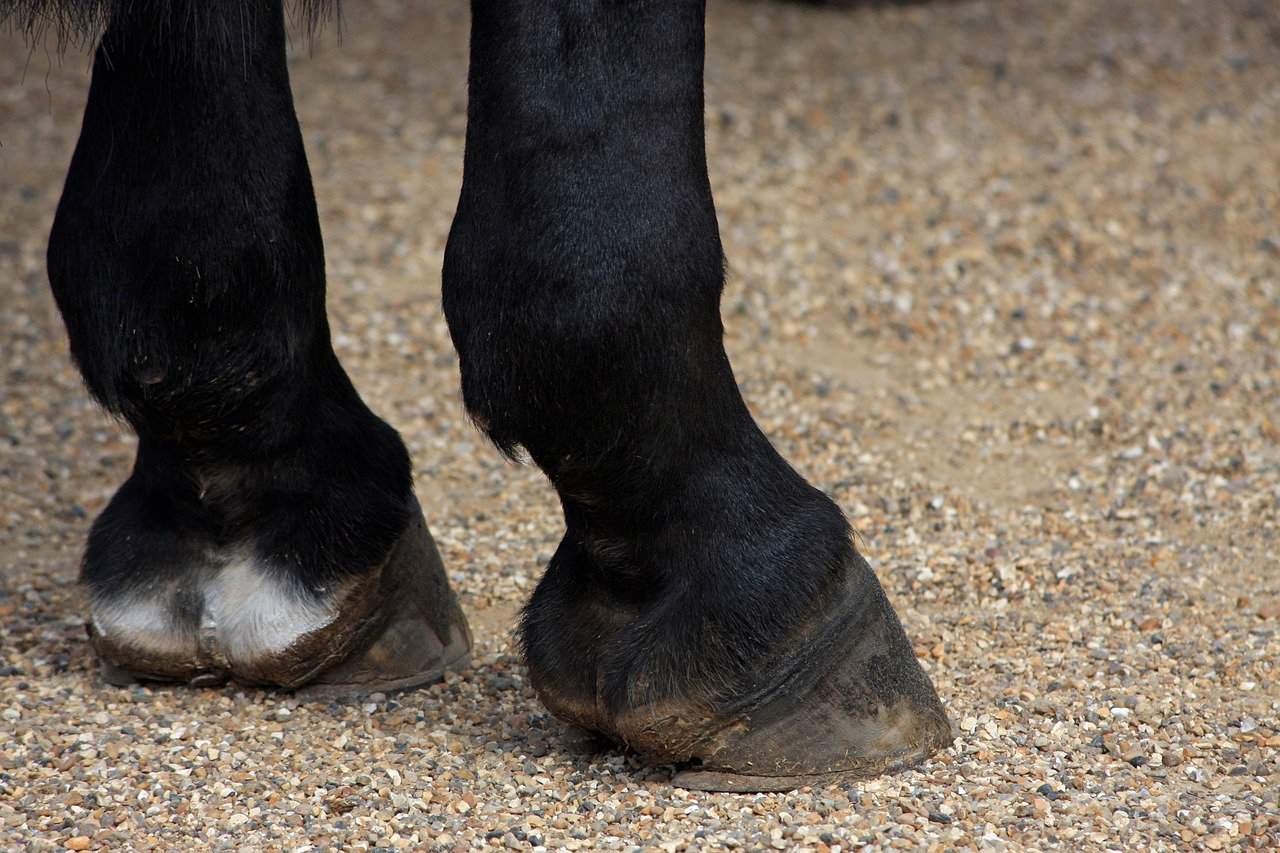
The best way to care for hooves is with regular trimming and daily cleaning with a hoof pick. I also like to apply hoof oil in the summer to prevent them from becoming brittle. I also provide horses with regular exercise, a clean living environment, and a balanced diet to promote hoof health.
The most common hoof ailments are abscesses, cracked hooves, thrush, laminitis, and navicular syndrome. Daily hoof picking will help you catch these problems early before they develop into painful, chronic conditions. If you have doubts about your horse’s hoof condition, always seek veterinary advice.
Resources
- Apf, S. S. C. A. (2020). Hoof Cracks: Types and Treatment. The Horse.
- Basic Horse Hoof Care | Extension Horses. (n.d.)
- Belknap, J. K. (2023a, June 29). Navicular Disease in Horses. MSD Veterinary Manual
- Belknap, J. K. (2023b, June 29). Thrush in Horses. MSD Veterinary Manual
- Caring for your horse’s hooves. (n.d.). UMN Extension
- Carmichael, R. (2022). Hoof Cracks in Horses: Causes, Treatment, and Prevention. Horse Sport
- Cross, B. (n.d.). Essential hoof care for horses. Blue Cross
- Functional Anatomy of the Horse Foot. (n.d.). MU Extension
- Hoof anatomy | The British Horse Society. (n.d.). The British Horse Society
- Hoof care | The British Horse Society. (n.d.). The British Horse Society
- RVC Equine Laminitis Facts and Research. (n.d.)
- Taylor Fabus, Michigan State University Extension. (2019). Preventing and treating thrush in horses. Horses.
Read More: Horse Ownership Guide


